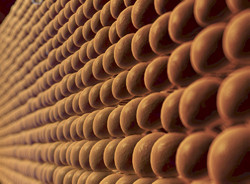Clustering and mobility in the cell membrane
Formation of transient and stable signalling platforms or groups of molecules likely plays a role in establishment of cell polarity, the asymmetric spatial organisation of various cellular entities. Polarity is essential to the functioning of many if not all cell types and, thus, signalling platforms directly and indirectly affect numerous cellular functions. Despite the important roles of these assemblies in the plasma membranes of cells, the fundamental mechanisms of their formation and dynamics are still poorly understood. EU-funded scientists working on the project MODELLING DIFFUSION developed mathematical models of the diffusion of protein-lipid clusters in inhomogeneous membranes. Researchers first developed a mathematical model to simulate the early stages of development of neuronal polarity. The stereotypical cell has the signal-sending axon extending from one side of the cell body and the signal-receiving dendritic tree on the opposite side. Axon-dendrite formation is one of the most critical steps in brain development. Extensive analyses of equilibrium points and bifurcations facilitated the study of spontaneous symmetry breaking, with results leading to a publication in a peer-reviewed scientific journal (PloS ONE). The team then went on to develop a stochastic version of the deterministic model. In the latter case, it is shown that formation of a single pole of molecular asymmetry is very robust to noise; furthermore, the region of self-organisation became bigger and neuronal polarization could occur even with reduced feedback strength. This work was also published in a peer-reviewed scientific journal (Eur. Phys. J. B). Researchers also study the diffusion of one of the most important excitatory neurotransmitter (glutamate) receptors. Scientists studied diffusion differences between young and old neurons during activation with glutamate. This work has been published in a peer-reviewed scientific journal (EMBO Molecular Medicine). In order to analyse the data from Single Particle Tracking, a software application for MatLab was developed (APM_GUI) and it is distributed under the terms of the GNU General Public License. The algorithm has been published in a peer-reviewed scientific journal (BMC Biophysics). Finally, the team has begun studies of changes in the membrane diffusion of an important target of phosphorylation, a major signalling pathway. They are looking for a potential correlation between changes in diffusion patterns with ageing and the decline of cognitive and motor performance. Mathematical descriptions of cellular polarity developed within MODELLING DIFFUSION are providing insight into diffusion mechanisms in cellular membranes. With a focus on the role of cluster formation and maintenance, the team is shedding light on development, normal function, ageing and disease.







